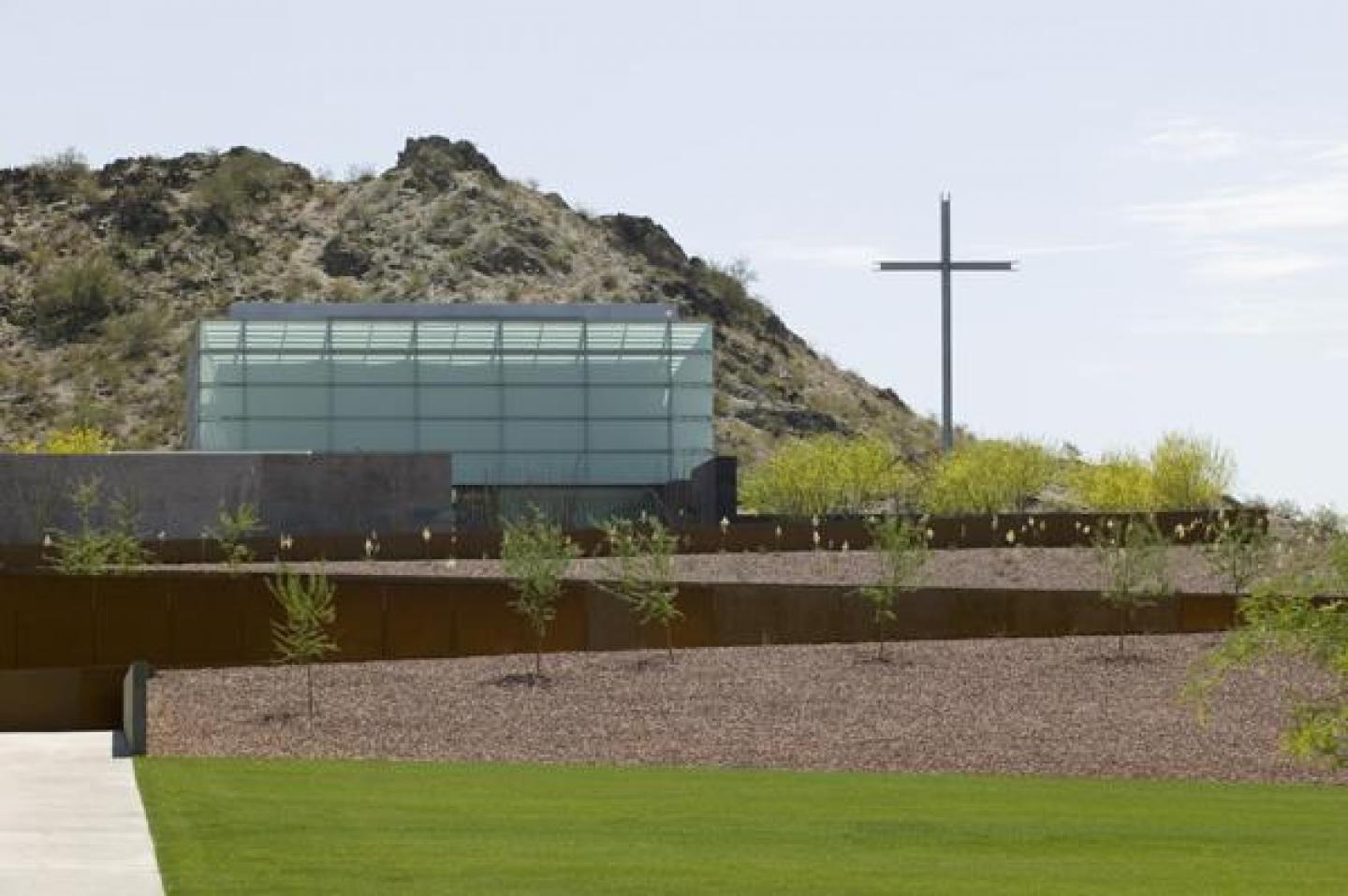The PRAYER PAVILION OF LIGHT is part of a 58-acre church campus in Phoenix, Arizona, USA. Sited along the edge of a desert preserve, a series of inclined, landscaped planes is incised by a 600 foot-long processional walk, progressively revealing the orthogonal chapel as one gradually ascends the 28 vertical feet between the chapel mount and garden entrance.
Arrival upon the exposed-aggregate plaza is met by an orderly, yet inviting bosque of desert trees and a 70 foot-long black reflection pool. Emerging from the water, a flame burns adjacent to a 50 foot-high steel cross.
Envisioned as a ‘lantern on a hill,’ the minimal chapel sits suspended eight feet above the ground, defined by four steel frames supported on a pinwheel of four black-concrete walls. The extended length of each wall defines three unique courtyards around the building.
The physical enclosure of the chapel is entirely glass. Above the eight foot datum, an outer steel frame is connected directly to the main structural frame and is glazed with a layer of fritted-translucent glass that, in turn, shades the inner-layer of triple-insulated translucent glass. The five foot-deep air-space created by the shaded void between the double skins is a natural convection air chimney, releasing hot surface-air while drawing cooler shaded-air along the face of the building. The convection chase and shaded skin eliminate direct sunlight upon the interior glass, creating a soft glowing interior and removing the need for electric light during the daytime.
Below the eight foot datum, and on three sides of the building, stacking, sliding glass doors define the interior and completely open to the outdoor space. Facing west, the processional entrance into the space is defined by translucent glazing which flanks a pair of monumental, cast-bronze doors artistically inscribed with the Lord’s Prayer. Lacking exterior hardware, hands will patina the doors over time, further revealing the haptic realm of the building.
The minimal interior is subject to the day-lit glow of the upper shaded glass as well as encompassing views of the surrounding landscape. The flooring is a carefully ordered pattern of charcoal granite. When air conditioning is required, it is carried underground from the adjacent support building and delivered from the eight foot datum.
Three distinct outdoor spaces are defined by the black concrete wall extensions: a paved piazza to the south, a turf lawn to the east, a desert gravel bosque to the north. Moreover, the east-facing sides of two of the four concrete walls contain more than 1000 columbarium niches to memorialize loved ones or inter remains.
Adjacent to the west lies a quietly reposed concrete support building, resolved to a simple rectangle nestled into the ground. Within are offices, a meeting room, restrooms, and mechanical equipment, thus preserving the purity of the chapel. Parking is located at the base of the garden entrance, also maintaining an appropriate pedestrian buffer between the sacred and profane.
At night the glass pavilion is further transformed by light. Illuminated by hundreds of LED fixtures mounted between the double skins, ‘the lantern on the hill’ morphs into intense, sublime hues of color and shade, a glowing, unique, and fascinating environment created by each color shift.
2005
2007






